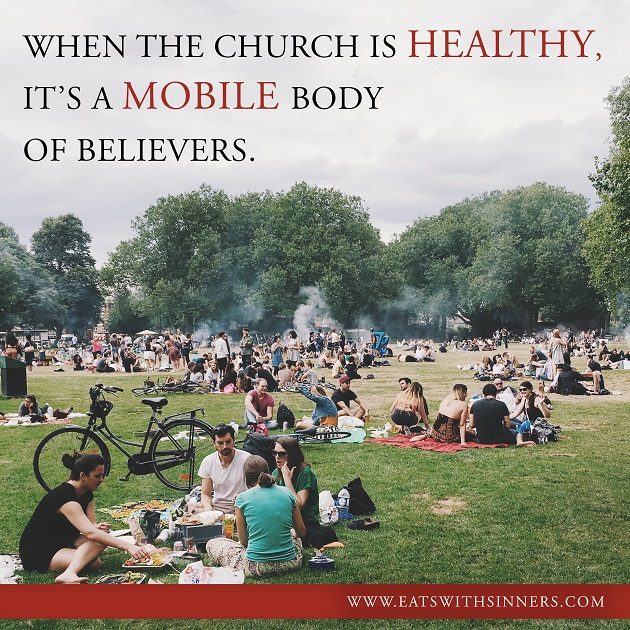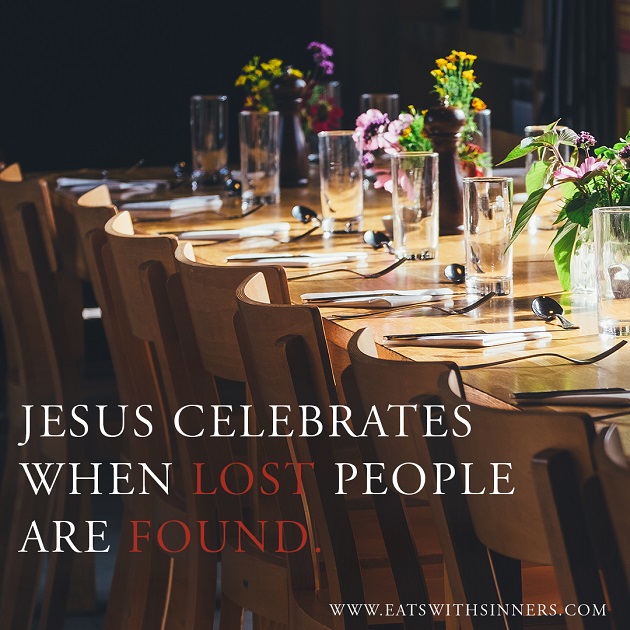June 29, 2017
Church Box vs Church Body
Church Box vs Church Body

There is a barrier we place between lost people and God that may not seem to you to be a barrier at all.
It’s the church building.
I often talk with cliches.
I just can’t seem to help myself.
I could say, “We need to be unified as we begin this project,” but instead I say, “We need to make sure we’re on the same page.”
I could say, “I want to improve our worship service,” but instead I say, “It’s time to take our worship service to the next level.”
I could ask my team to think creatively, but it’s so much more fun to ask them to “think out of the box.”
To think out of the box is to see beyond the norm—to think new about something old.
I’d like you to think new about the church and church buildings.
I’d like you to think out of the box.
I know, I know—church buildings create identity, opportunity, stability, credibility, and reflect a commitment to the community.
Church buildings are not the enemy; they are effective tools that can be used to reach people for Jesus, but they also can become—if we’re not careful—big boxes that isolate Christians from the world (and each other) and sap huge amounts of time, energy, and money that could otherwise be used for outreach and staffing needs.
Please understand that I don’t hate church buildings.
My dad was a preacher, and I grew up sitting on the second pew on the right side of a church building.
We lived in a parsonage next to a church building, so I spent countless joy-filled hours playing in a church building.
I was baptized in a church building and married in a church building.
I work in a church building every day.
I want you to know that I don’t hate church buildings, but I don’t love them either—because church buildings are just very attractive, functional, but expensive tools.
Now, I know of a lot of dynamic congregations who are already thinking out of the box and effectively using their buildings to reach their world for Jesus.
But there are other congregations that appear capable of thinking only of the box and how best to stay hidden, protected, and isolated inside their comfortable, stained-glassed world, while lost people are left to find other boxes someplace else.
Thinking out of the box about the church building is not a new concept.
The first Christians did pretty well without the use of church buildings.
They gathered in homes, tombs, catacombs, and anyplace else they could gather safely in the midst of persecution.
A body is the image God uses for his church (Ephesians 5:23; Colossians 1:18; Romans 12:4, 5), but some churches today, based on how they spend their time and money, prefer to focus on the box instead of the body.
This is problematic for several reasons.
First, boxes don’t move.
Boxes are not alive, so—unlike a healthy human body—they are completely immobile.
The church was never meant to be viewed as an immobile box sitting on the corner of Eighth and Main; God intended for us to view the church as a healthy, mobile body of believers moving—walking—through this world.
Throughout the Bible our faithfulness is compared to a walk (Psalm 1:1; 1 John 1:7).
Because Jesus knows our tendency to entrench, one of his last commands to us was to go (Matthew 28:19).
The church is commanded to search out and get next to lost people—to make life, help, hope, peace, joy, truth, and love more accessible.
God intended for us to view the church as a healthy, mobile body of believers moving—walking—through this world.
I like to fish.
I like to catch fish.
The best way to catch fish is on a boat because a boat allows you to go wherever the fish are biting.
Another way to catch fish is to build a dock and hope the fish come to you.
Too many church buildings are unmovable docks—and the fish stopped biting years ago.
Second, boxes don’t grow.
If you’ve ever found yourself late on Christmas Eve trying to fit the perfect gift into an imperfect box, then you know from experience that boxes don’t grow.
Knowing this truth, Rick Warren used seventy-nine different facilities for functions in Saddleback Church’s first fifteen years—schools, banks, recreation centers, theaters, restaurants, large homes, even a 2,300-seat tent.
Warren is famous for saying, “The shoe must never tell the foot how big it can grow.”
Healthy bodies grow, and—if we’re not careful—our church boxes can hinder growth.
Third, boxes don’t last.
“It’s all gonna burn!”
We said this during a building program at a church where I served.
This phrase helped us to keep the building we were going to build in proper perspective.
Because of the high cost of construction and the need for a facility sufficient to support a growing congregation, we would have to spend a lot of money to build an excellent tool, but we didn’t want to forget that what we were physically building was going to be temporary.
We’re not the first disciples who have had to be reminded that all buildings are temporary.
Once, as Jesus left the temple in Jerusalem, one of his disciples, impressed with Solomon’s work, exclaimed, “Look, Teacher!
What massive stones!
What magnificent buildings!”
To which Jesus replied, “Do you see all these great buildings? Not one stone here will be left on another; every one will be thrown down” (Mark 13:1, 2).
And although I believe that in historical context Jesus was referring to the destruction of the temple that was going to occur at the hand of the Romans in ad 70, his words accurately describe what the future ultimately holds for all great buildings—church buildings included.
And fourth, boxes don’t care.
You can’t have a relationship with a building.
Buildings don’t walk, talk, giggle, cry, or care, but a healthy body shares both joy and pain (1 Corinthians 12:12-27).
Our buildings, unless we’re careful, can hinder our ministry to hurting people by distancing us from them.
Jesus touched people.
He listened to them, saw them, and mingled with them.
If we want to be like him, then we must do everything we can to maximize the time we spend outside of our church buildings.
We must be as intentional with our evangelistic efforts as we can be so that we can connect with hurting people at their point—and place—of need.
I feel like I need to pause here because I know what you’re thinking: Arron, out of all the possible barriers that we can put between lost people and Jesus, you chose church buildings?
Are you serious?
What about hypocrisy, pride, prejudice, materialism, and disunity?
Well, those are definitely a few of the many spiritual barriers that we can put between lost people and the hope of salvation, but I wanted to identify what I think are the two biggest physical barriers, because I believe that, since they are physical, they are the easiest to deal with and a great place to start.
When people who are searching for meaning in this life encounter us, they should find hope, not hate.
They should find love, not judgment.
They should find us clearing a path, not cluttering it.
They should find clarity, not confusion.
No one should have to wear the right clothes or walk into one of our church buildings to find life, help, hope, peace, joy, truth, and love.
No, accessing these blessings should be as easy as sitting down for a meal with you or me.
You’ve been reading with Arron Chambers from his book Eats With Sinners. Read the first chapter or watch Arron talk about his book here- eatswithsinners.com. Get your copy for personal or group use at navpress.com. Originally posted on thedisciplemaker.org




